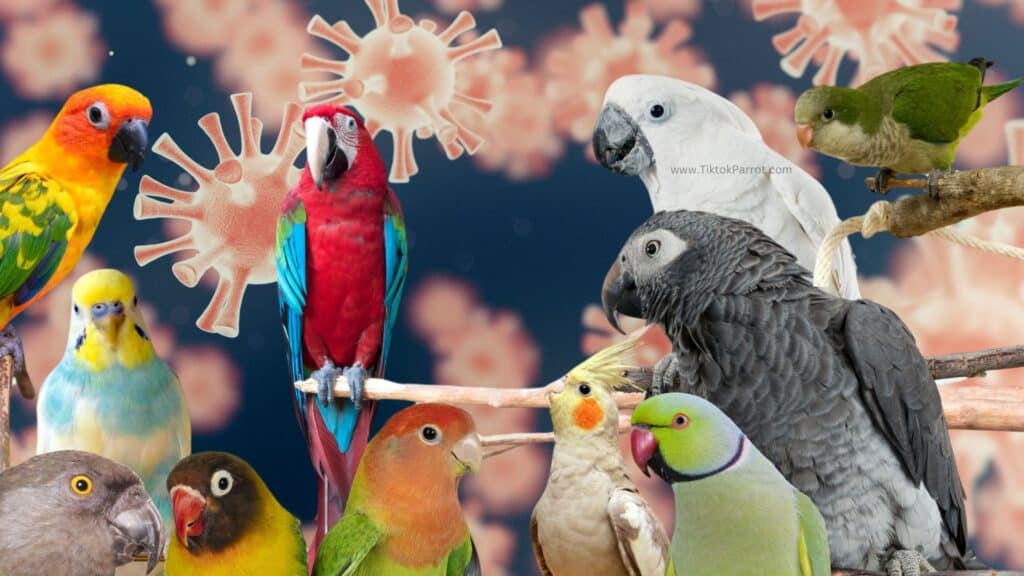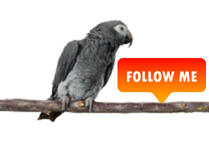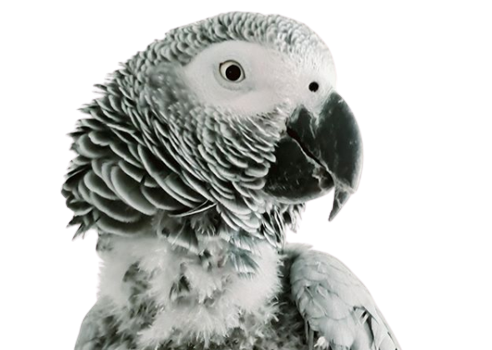Alright, folks, let’s dive beak-first into the quirky world of Psittacine Beak and Feather Disease (PBFD) – because who doesn’t love a good mystery, right? Picture this: you’re minding your own business, enjoying some quality time with your feathered friend, when suddenly, disaster strikes. Feathers start falling out, beaks become overgrown – it’s like a scene straight out of a birdie horror movie!
But fear not, my avian aficionados, for we’re here to shed some light on this feather-ruffling phenomenon. PBFD, also known as “French Moult,” is a sneaky little virus that likes to wreak havoc on our beloved pet birds. It’s like the unruly houseguest who overstays their welcome – you never see it coming until it’s too late.
Mystery of PBFD in birds: Learn about the quirks, challenges, and treatments of Psittacine Beak and Feather Disease. Keep your feathered friends safe!

So, what exactly is PBFD, and why should you care? Well, strap yourselves in, folks, because things are about to get wild. Imagine this virus as the ultimate feather thief – sneaking in under the radar and causing chaos wherever it goes. From feather loss to beak deformities, PBFD can turn your feathered friend’s life upside down faster than you can say “squawk.”
But here’s the kicker – PBFD isn’t just a problem for pet birds. Oh no, it’s a sneaky little bugger that can affect wild populations too. It’s like the neighborhood prankster wreaking havoc on every unsuspecting bird in its path. So, what’s a bird lover to do? Well, my friends, knowledge is power – and we’re here to arm you with all the information you need to keep your feathered friends safe and sound.
Symptoms of PBFD in birds
Psittacine Beak and Feather Disease (PBFD) is a viral disease that affects birds in the psittacine family, which includes parrots, African greys, cockatoos, macaws, and other related species. These birds are most commonly affected by PBFD, although it can potentially impact other species of birds as well.
PBFD is particularly prevalent in captive psittacine populations, but it can also affect wild populations under certain conditions.. The symptoms of PBFD can vary depending on the stage of the disease and the species of bird, but they typically include:
- Feather abnormalities: Affected birds may exhibit abnormal feather growth, such as elongated or frayed feathers, or they may lose feathers altogether. Feathers may also appear brittle or discolored.
- Beak abnormalities: The beak may become overgrown, misshapen, or develop irregularities such as lesions or cracks.
- Weight loss: Birds with PBFD may experience a decline in appetite and subsequent weight loss.
- Weakness and lethargy: Affected birds may appear weak, lethargic, and less active than usual.
- Immune suppression: PBFD can weaken the bird’s immune system, making them more susceptible to secondary infections and illnesses.
- Gastrointestinal symptoms: Some birds may exhibit gastrointestinal symptoms such as vomiting or diarrhea.
- Behavioral changes: Birds with PBFD may exhibit changes in behavior, including increased irritability, aggression, or depression.
It’s important to note that not all birds will exhibit all of these symptoms, and the severity of symptoms can vary widely between individual birds. Additionally, some birds may be carriers of the virus without showing any outward signs of illness. If you suspect that your bird may have PBFD, it’s crucial to consult with a veterinarian experienced in avian medicine for proper diagnosis and treatment.
How long do birds live with PBFD?
The prognosis for birds with Psittacine Beak and Feather Disease (PBFD) can vary widely depending on factors such as the species of bird, the stage of the disease at the time of diagnosis, the bird’s overall health, and the effectiveness of any treatment provided.
Unfortunately, PBFD is often fatal, especially in cases where the disease is advanced or where secondary infections occur due to the weakened immune system.
Birds diagnosed with PBFD may survive for varying lengths of time, ranging from weeks to several years. Some birds may experience periods of remission where symptoms improve temporarily before worsening again. However, it’s important to note that PBFD is a progressive disease, meaning it tends to worsen over time, and there is currently no cure for the virus.
Treatment for PBFD typically focuses on supportive care to manage symptoms and improve the bird’s quality of life. This may include nutritional support, antibiotics to treat secondary infections, and environmental modifications to reduce stress.
However, the effectiveness of treatment can be limited, and the disease may eventually become untreatable as it progresses.
In summary, while some birds with PBFD may survive for an extended period with appropriate care, the disease is often ultimately fatal. Early detection and intervention may improve the bird’s prognosis, but PBFD remains a significant health concern for affected birds.
Can birds live with PBFD?
Birds diagnosed with Psittacine Beak and Feather Disease (PBFD) can survive with the condition for varying lengths of time, but the prognosis depends on several factors:
- Stage of the disease: Birds diagnosed with PBFD in the early stages may have a better chance of survival compared to those diagnosed in advanced stages. Early detection allows for interventions to manage symptoms and support the bird’s health.
- Overall health: The general health and immune status of the bird can influence its ability to cope with PBFD. Birds that are otherwise healthy may have a better chance of managing the disease compared to those that are already weakened by other health issues.
- Secondary infections: PBFD weakens the bird’s immune system, making them more susceptible to secondary bacterial, fungal, or viral infections. Effective management of these secondary infections can improve the bird’s quality of life and longevity.
- Treatment and supportive care: While there is no cure for PBFD, supportive care can help manage symptoms and improve the bird’s quality of life. This may include nutritional support, treatment of secondary infections, and environmental modifications to reduce stress.
- Species and individual variability: Some bird species may be more resilient to PBFD than others. Additionally, individual birds may respond differently to the disease and its management.
While some birds with PBFD may survive for an extended period with appropriate care, the disease is often progressive and ultimately fatal. Regular veterinary care and monitoring are essential for birds diagnosed with PBFD to optimize their quality of life and provide appropriate interventions as needed.
Can humans catch PBFD?
Psittacine Beak and Feather Disease (PBFD) is caused by a circovirus that primarily affects birds in the psittacine family, such as parrots, cockatoos, and macaws. While PBFD is highly contagious among birds and can spread through direct contact, contaminated surfaces, or even airborne particles, it does not affect humans.
Circoviruses, including the one that causes PBFD, typically have a narrow host range and are not known to infect humans. Therefore, humans cannot catch PBFD from infected birds.
However, it’s always a good idea to practice good hygiene when handling birds or their equipment, especially if they are known to be sick or if you are uncertain about their health status.
Additionally, if you have birds in your care that are diagnosed with PBFD, it’s essential to take precautions to prevent the spread of the virus to other birds in your household or aviary. This may include quarantining affected birds, disinfecting cages and equipment, and minimizing contact between healthy and infected birds.
Consulting with a veterinarian experienced in avian medicine can provide guidance on managing PBFD in a multi-bird environment.
Is there a cure for PBFD in birds?
Sad to say, so far even we are in 2024, there is no known cure for Psittacine Beak and Feather Disease (PBFD) in birds. PBFD is caused by a circovirus, and while there have been efforts to develop treatments, none have been proven consistently effective in curing the disease.
Management of PBFD typically involves supportive care aimed at improving the bird’s quality of life and managing symptoms. This may include nutritional support, treatment of secondary infections, environmental modifications to reduce stress, and measures to prevent the spread of the virus to other birds.
Early detection of PBFD is crucial for implementing interventions that may help slow the progression of the disease and manage symptoms more effectively. However, once a bird is infected, the disease tends to be progressive, and affected birds may eventually succumb to the illness.
My Closing Thoughts
Given the lack of a cure for PBFD, prevention is key. Measures to prevent the spread of the virus include strict quarantine procedures for newly acquired birds, routine testing for PBFD in breeding programs, and careful hygiene practices to minimize the risk of transmission between birds.
If you suspect that your bird may have PBFD, it’s essential to seek veterinary care from a veterinarian experienced in avian medicine for proper diagnosis and management. They can provide guidance on the best course of action for your bird’s health and well-being.
If you found this blog helpful, It would be great if you could share it with your family and friends who might find it useful as well.
You might like to read these as well 🙂
Understanding Pacheco’s Disease Symptoms, Transmission and Prevention
Mystery of African Grey Parrot Proventricular Dilatation Disease (PDD)
From Beaks to Bellies: Understanding African Grey Parrot Vomiting
What diseases can African Grey parrots get?
What causes death in African Grey Parrots?
For more useful content about African grey parrots, you can subscribe my site with your email to get notification upon publishing a new blog, the subscribe box you can see on the right side of this page. Also if you get an alert on your web browser while browsing my site, allow it and that will also give you an alert whenever I publish a new blog. 🙂
Stay safe and much love!



